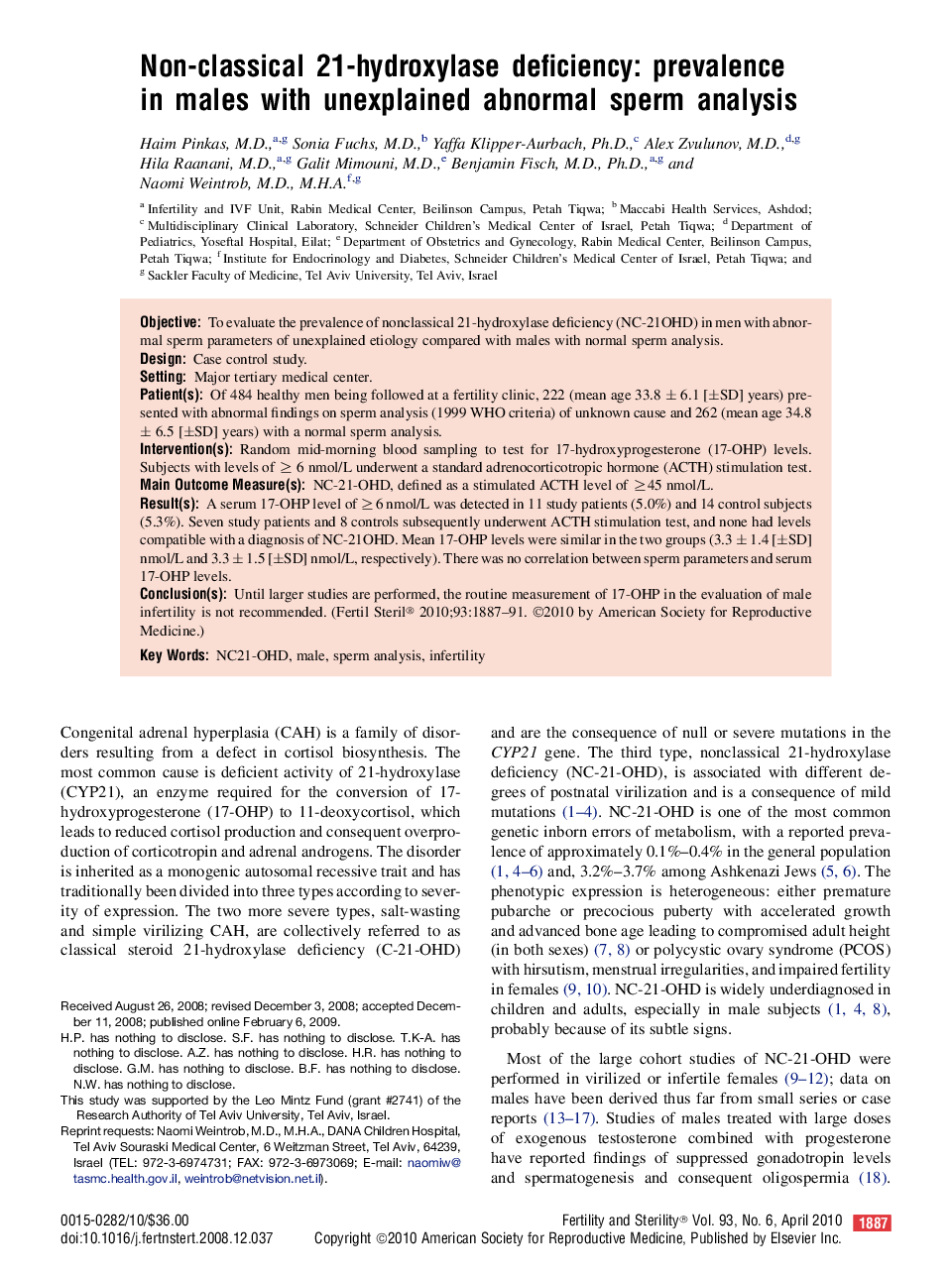| Article ID | Journal | Published Year | Pages | File Type |
|---|---|---|---|---|
| 3940832 | Fertility and Sterility | 2010 | 5 Pages |
ObjectiveTo evaluate the prevalence of nonclassical 21-hydroxylase deficiency (NC-21OHD) in men with abnormal sperm parameters of unexplained etiology compared with males with normal sperm analysis.DesignCase control study.SettingMajor tertiary medical center.Patient(s)Of 484 healthy men being followed at a fertility clinic, 222 (mean age 33.8 ± 6.1 [±SD] years) presented with abnormal findings on sperm analysis (1999 WHO criteria) of unknown cause and 262 (mean age 34.8 ± 6.5 [±SD] years) with a normal sperm analysis.Intervention(s)Random mid-morning blood sampling to test for 17-hydroxyprogesterone (17-OHP) levels. Subjects with levels of ≥ 6 nmol/L underwent a standard adrenocorticotropic hormone (ACTH) stimulation test.Main Outcome Measure(s)NC-21-OHD, defined as a stimulated ACTH level of ≥45 nmol/L.Result(s)A serum 17-OHP level of ≥6 nmol/L was detected in 11 study patients (5.0%) and 14 control subjects (5.3%). Seven study patients and 8 controls subsequently underwent ACTH stimulation test, and none had levels compatible with a diagnosis of NC-21OHD. Mean 17-OHP levels were similar in the two groups (3.3 ± 1.4 [±SD] nmol/L and 3.3 ± 1.5 [±SD] nmol/L, respectively). There was no correlation between sperm parameters and serum 17-OHP levels.Conclusion(s)Until larger studies are performed, the routine measurement of 17-OHP in the evaluation of male infertility is not recommended.
